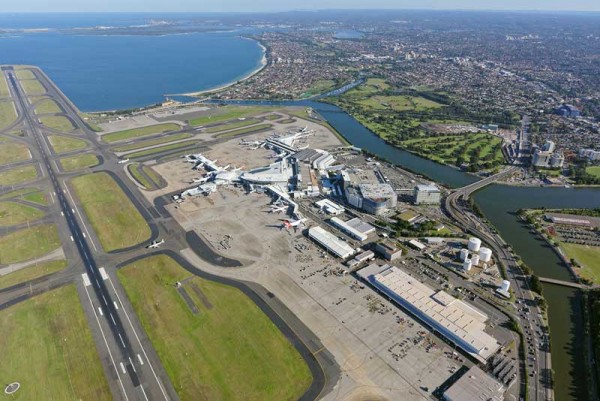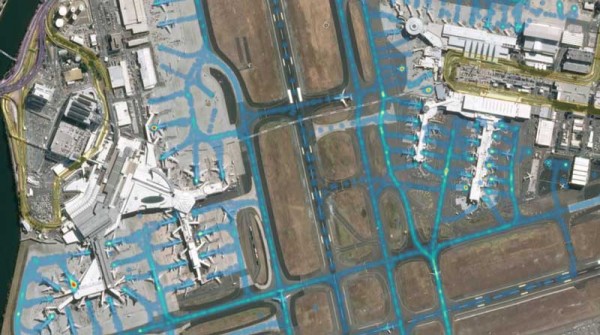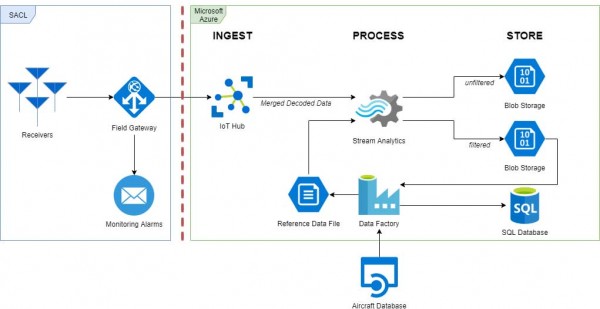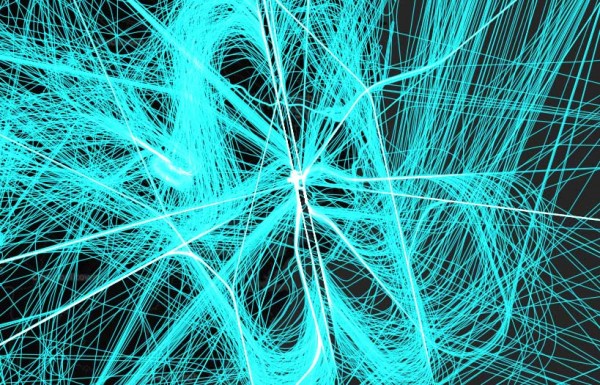Optimising the taxiway at Sydney Airport thanks to IoT and data science
With some 44 million passengers each year, Sydney Airport is the largest airport in Australiaand is located around nine kilometres south of the city centre. It has three terminals – two for domestic flights and one for international travel.
In order to gain better insight into the use of its the airfield and thus optimise it, antennas and transmitters were placed around the airfield at Sidney Airport to record the exact movements of the aircraft.
The objective was to identify patterns and gain insights to understand and improve the use of the airfield.

Fig. 1: Sydney Airport
The airport’s requirements suit CSA’s area of business well.
CSA Engineering AG was therefore commissioned to collect, store and process aircraft movements using a Microsoft Azure cloud solution.
The go-ahead was given in January 2019, and the project was divided into two phases initially. Phase 1– defining the architectural concept as a basis for selecting the implementation partner – was planned by the CSA project manager.
The specification phase lasted six months. Thanks to the sound knowledge and painstaking work of the project manager and his team, CSA was also chosen to implement the project in June 2019.
This was the first data project on this scale at Sydney Airport. But where does the information required actually come from?
The position and flight details of each aircraft are freely transmitted by means of a transmitter and can be read with a corresponding receiver. In this project, the data from the aircraft on the ground were useful for analysing the use of the airfield. The aircraft position, flight number, speed, direction and a unique identification number are transmitted by the transmitter in the aircraft. These data are saved every 5 seconds, producing about half a million data points per day.

Fig. 2: Position and movements of the aircraft on the apron © CNES (2019) Distribution Airbus DS, © 2019 HERE, © 2019 Microsoft Corporation
The design of the overall solution for the project can be seen in the following diagram. The data from the receivers are processed in the field gateway which then sends the merged and readable data to the IoT hub. From there, the objects are processed and enriched with reference data from an external source and stored in Microsoft Azure as a CSV – a text file which stores structured data.

Fig. 3: System overview © CSA Engineering AG, © Microsoft Corporation
“We were able to use state-of-the-art technologies to implement the project, which was great fun. We were also able to count on a strong partner in Microsoft”.

Fig. 4: Log of the path travelled by the aircraft over one day. © CSA Engineering AG, © MapTiler, © OpenStreetMap contributors
